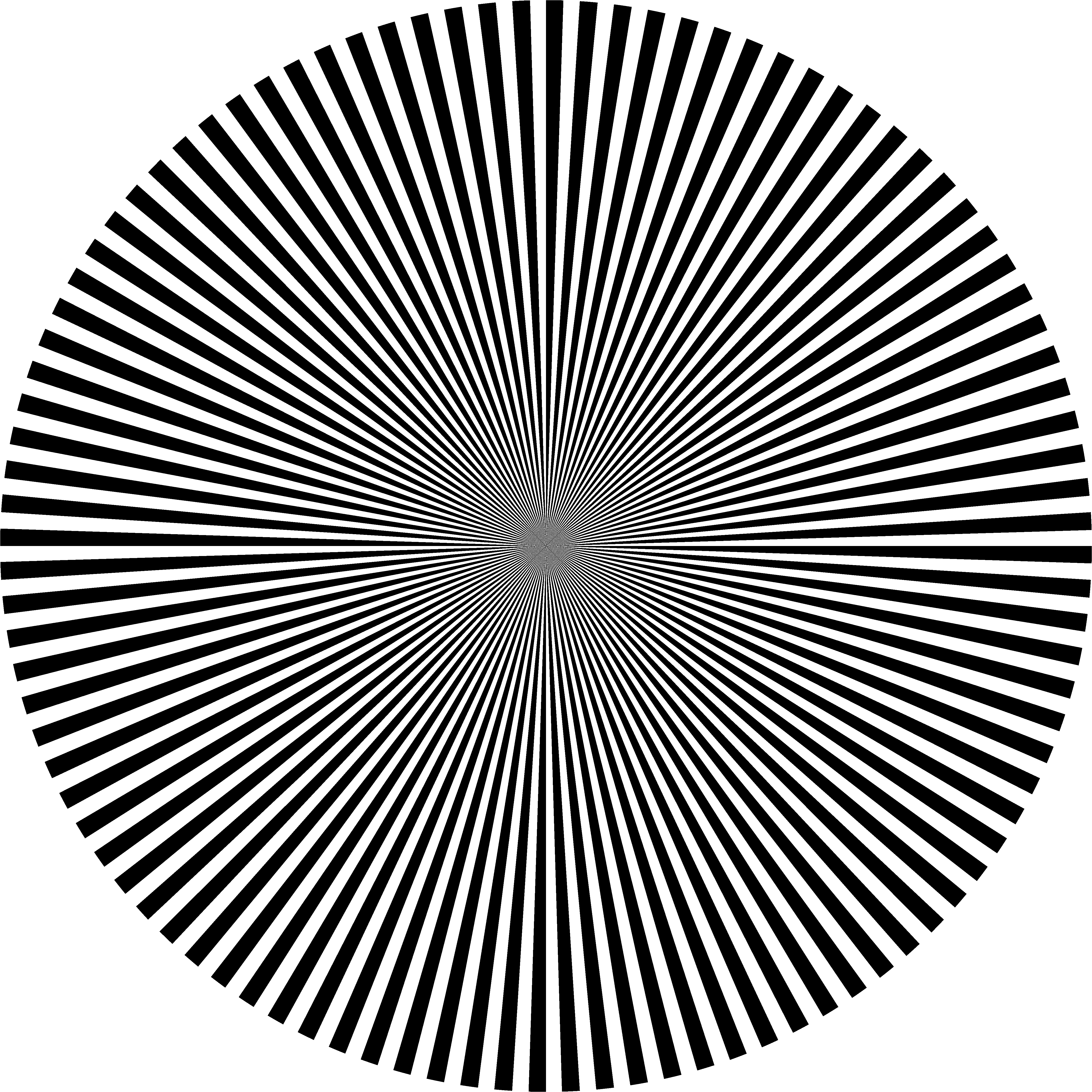

(It is not blurred or aberrated, so it does not show spurious resolution.) It shows aliasing in the center, where the spokes are smaller than the pixel pitch. Star targets are ideal for identifying focus errors, astigmatism, and other aberrations existing in an imaging system.

Under optical blur from defocus, a Siemens star (like any periodic pattern) gives rise to the phenomenon of spurious resolution above the resolution limit, i.e. Our 60mm diameter (58-832 and 58-833) targets feature an unresolved core of 100m, and are ideal for high-resolution or high magnification imaging systems. (Spurious resolution appears similar to aliasing, but it is a purely optical phenomenon, so it occurs without need of pixels.) This results in inverted polarity of the stripe pattern: black stripes appear in the place of white stripes and vice versa (and further polarity inversions occur further inward). (The illustration under Optical transfer function shows spurious resolution caused by blurring.) When looking at the Siemens star with slightly blurred vision, e.g., without spectacles or with defocus from staring, this is seen as a shimmering ring around the Siemens star's center that changes size with viewing distance. Star Targets (Glass and Photo Paper) Siemens Star Target, 4. The star was developed by Siemens & Halske AG (today Siemens) in the 1930s to test the lenses of Siemens narrow-film cameras.

Ideal for Detection of Focus Errors and Astigmatism Frequency Range at Target Center.


 0 kommentar(er)
0 kommentar(er)
